Apple M3, M3 Pro and M3 Max Chips: Everything you need to know
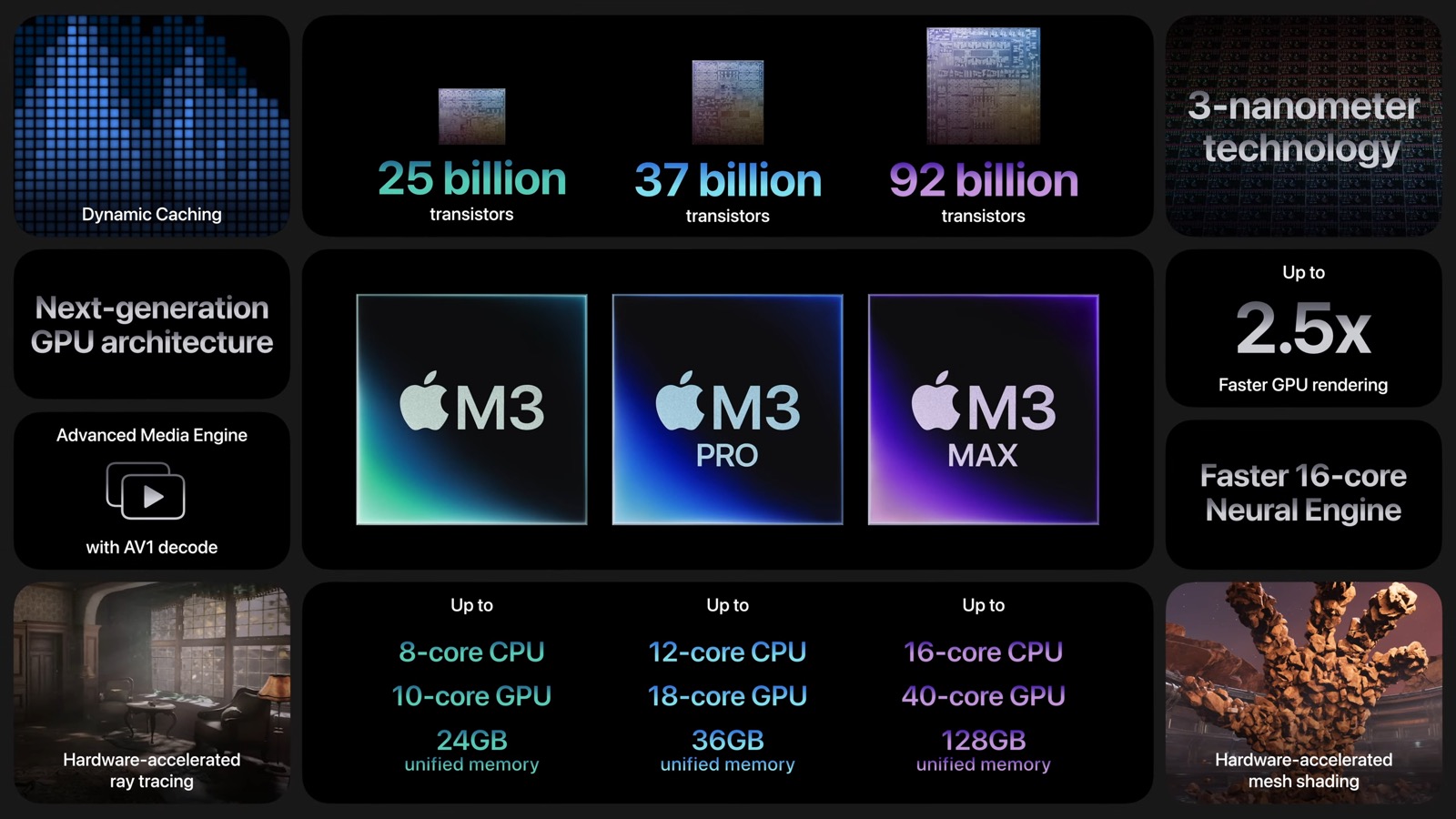
It’s hard to believe that the Apple M1 chip was launched only three years ago, followed by the M1 Pro and M1 Max chips a year later, but what’s even harder to believe is that the new M3 processor series today explodes everything that these processors had to offer.
This year, Apple unveiled the standard M3 chip simultaneously as well as the M3 Pro and M3 Max chips, which allows us to see how much Apple has progressed in a few years.
Overview of the M3
 family;
The new M3 chip range is built from a 3-nanometer architecture and everything that Apple has learned with previous generations of M-series processors.
These chips are equipped with a processor with performance and efficiency cores, a GPU and a 16-core embedded neural engine. The processor cores have improved branch prediction for greater efficiency, and the performance cores have a wider decoding and execution engine, while the efficiency cores have a deeper execution engine, which improves overall performance and efficiency.
The neural engine, which handles tasks such as machine learning on the device, is up to 60% faster than that of previous chips.
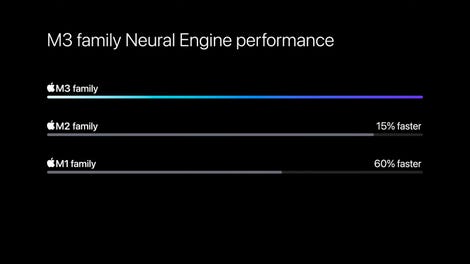
Performance of the M3 neural engine. Apple
The new multimedia engine also offers H.264 and HEVC hardware acceleration, support for ProRes and ProRes RAW, as well as an AV1 decoding engine to more efficiently handle videos from YouTube and Netflix, for example.
Like its predecessor, the M3 chip is focused on energy efficiency. The M3 CPU and GPU can offer the same performance as the M1 while consuming half as much energy.

Energy efficiency of the M3’s processor and GPU compared to that of the M1. Apple/ZDNET
Compared to a 12-core laptop chip, the M3 processor can provide the same performance for only a quarter of the power, while the GPU can do the same for only a fifth of the power.
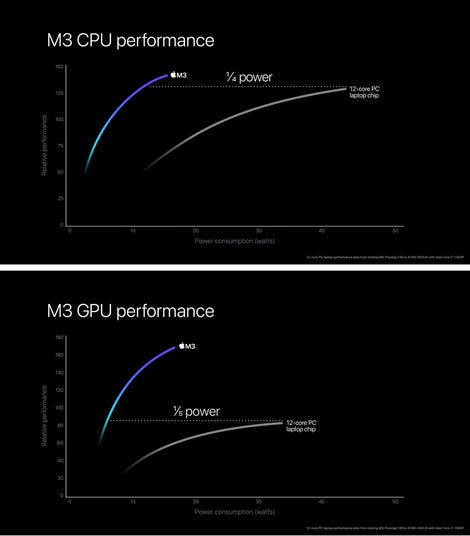
Efficiency of the M3 compared to a 12-core laptop chip. Apple/ZDNET
The M3 chip
This is the “basic” version of the new Apple Silicon range. It is up to 65% faster than the original M1 chip, depending on the criterion used to measure performance.
Technical characteristics of the M3 chip
- Up to 24 GB of unified memory
- 25 billion transistors
- 8-core CPU (4 performance cores and 4 efficiency cores)
- Up to 35% faster than M1 chips and 20% faster than M2 chips
-
10-core GPU with a new generation architecture, dynamic caching, mesh shading and ray tracing. - Up to 65% faster than M1 chips and 20% faster than M2 chips
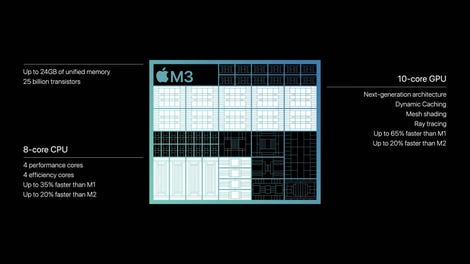
Apple M3 Chip. Apple/ZDNET
M3 Pro Chip
With more cores, the M3 Pro chip is more suitable for those who are looking for more performance for their hardware. It has more CPU and GPU cores and more unified memory than the basic M3 chip.
Technical characteristics of the M3 Pro
- Up to 36 GB of unified memory
- 37 billion transistors
- 12-core processor (6 performance cores and 6 efficiency cores)
- Up to 20% faster than M1 Pro
 chips;
-
18-core GPU with a new generation architecture, dynamic caching, mesh shading, and ray tracing - Up to 40% faster than M1 Pro chips and 10% faster than M2 Pro chips
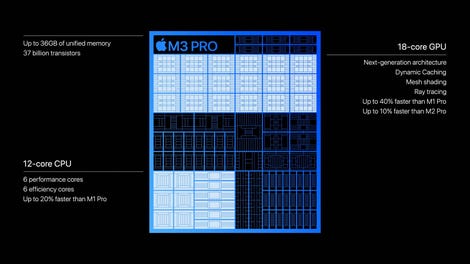
M3 Pro Chip. Apple/ZDNET
M3 Max Chip
With the M3 Max, everything is set to the maximum, making it the ideal chip for those who want to handle heavy and complex workloads.
Technical characteristics of the M3 Max
- Up to 128 GB of unified memory
- 92 billion transistors
- 16-core processor (12 performance cores and 4 efficiency cores)
- Up to 80% faster than M1 Max chips and 50% faster than M2 Max chips
-
40-core GPU with next-generation architecture, dynamic caching, mesh shading and ray tracing - Up to 50% faster than M1 Max chips and 20% faster than M2 Max chips
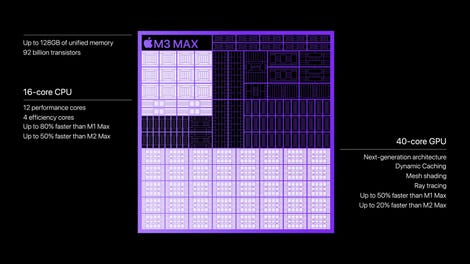
M3 Chip Max. Apple/ZDNET
Source: “ZDNet.com “








